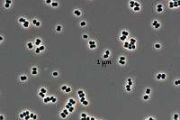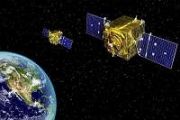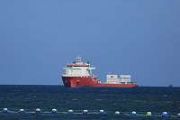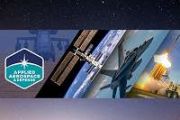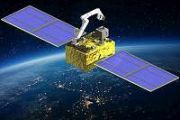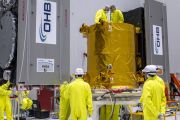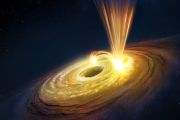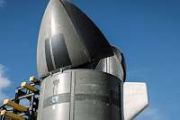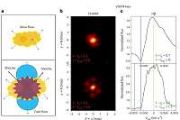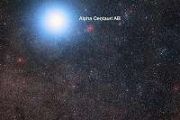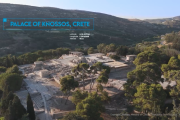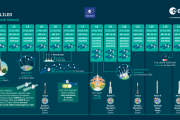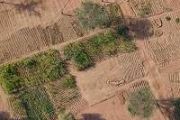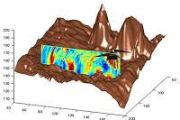
Copernical Team
SES to enable RPAS operations via satellite
 The latest contract awarded by the European Maritime Safety Agency (EMSA) will see the agency continue to use SES's high-performance satellite connectivity services for Remotely Piloted Aircraft Systems' (RPAS) operations, SES and EMSA announced. Under the new agreement, SES's managed connectivity service will allow end-users to receive and exchange RPAS data in near real-time and support the op
The latest contract awarded by the European Maritime Safety Agency (EMSA) will see the agency continue to use SES's high-performance satellite connectivity services for Remotely Piloted Aircraft Systems' (RPAS) operations, SES and EMSA announced. Under the new agreement, SES's managed connectivity service will allow end-users to receive and exchange RPAS data in near real-time and support the op Sidus Space announces the upcoming launch of LizzieSat
 Sidus Space, Inc. (NASDAQ:SIDU), a Space-as-a-Service satellite company focused on commercial satellite design, manufacture, launch, and data collection, is pleased to announce its forward progression towards launch of its LizzieSat (LS) satellite to the International Space Station (ISS). This mission is slated to take place later this year.
LS is a multi-mission satellite that supports cu
Sidus Space, Inc. (NASDAQ:SIDU), a Space-as-a-Service satellite company focused on commercial satellite design, manufacture, launch, and data collection, is pleased to announce its forward progression towards launch of its LizzieSat (LS) satellite to the International Space Station (ISS). This mission is slated to take place later this year.
LS is a multi-mission satellite that supports cu Quantum complexity grows linearly for an exponentially long time
 "We have found a surprisingly simple solution to an important problem in physics," says Prof. Jens Eisert, a theoretical physicist at Freie Universitat Berlin and HZB. "Our results provide a solid basis for understanding the physical properties of chaotic quantum systems, from black holes to complex many-body systems," Eisert adds.
Using only pen and paper, i.e. purely analytically, the Be
"We have found a surprisingly simple solution to an important problem in physics," says Prof. Jens Eisert, a theoretical physicist at Freie Universitat Berlin and HZB. "Our results provide a solid basis for understanding the physical properties of chaotic quantum systems, from black holes to complex many-body systems," Eisert adds.
Using only pen and paper, i.e. purely analytically, the Be At IAF anniversary celebration, a plea for continued cooperation in Space
 The International Astronautical Federation (IAF), the world's leading space advocacy. Organization founded in the French capital in 1951, held it 70th anniversary celebration here, following a brief covid- related delay. Each year, IAF organized a Grand Space meet, gathering as many as 5,000 delegates from
space agencies industries and other space-related entities with over 433 members fro
The International Astronautical Federation (IAF), the world's leading space advocacy. Organization founded in the French capital in 1951, held it 70th anniversary celebration here, following a brief covid- related delay. Each year, IAF organized a Grand Space meet, gathering as many as 5,000 delegates from
space agencies industries and other space-related entities with over 433 members fro MDA and US Army test integration of THAAD and Patriot missile defense
 The Missile Defense Agency, in partnership with the U.S. Army Program Executive Office Missiles and Space, U.S. Army Space and Missile Defense Command, and Ballistic Missile Defense System Operational Test Agency, successfully conducted a flight test of the Terminal High Altitude Area Defense (THAAD) Weapon System. The test, designated Flight Test THAAD Weapon System (FTT)-21, was conducted at t
The Missile Defense Agency, in partnership with the U.S. Army Program Executive Office Missiles and Space, U.S. Army Space and Missile Defense Command, and Ballistic Missile Defense System Operational Test Agency, successfully conducted a flight test of the Terminal High Altitude Area Defense (THAAD) Weapon System. The test, designated Flight Test THAAD Weapon System (FTT)-21, was conducted at t Viasat, Inmarsat to boost UK space industry investments
 Viasat and Inmarsat, the US and UK satellite communications groups, have agreed on a package of legally-binding economic undertakings with the UK Government's Department for Business, Energy and Industrial Strategy (BEIS) as part of the proposed combination of the two companies. BEIS welcomed the constructive discussions that have taken place with both companies on their future plans. The transa
Viasat and Inmarsat, the US and UK satellite communications groups, have agreed on a package of legally-binding economic undertakings with the UK Government's Department for Business, Energy and Industrial Strategy (BEIS) as part of the proposed combination of the two companies. BEIS welcomed the constructive discussions that have taken place with both companies on their future plans. The transa Shenzhou XIII astronauts prep for return
 Three astronauts stationed in China's Tiangong space station are preparing for their return trip in the middle of April, packing up personal items, experimental products and other materials, putting equipment into place and exercising to prepare their bodies for Earth's gravity.
The astronauts, Zhai Zhigang, Wang Yaping and Ye Guangfu, have to tidy up a large number of materials, including
Three astronauts stationed in China's Tiangong space station are preparing for their return trip in the middle of April, packing up personal items, experimental products and other materials, putting equipment into place and exercising to prepare their bodies for Earth's gravity.
The astronauts, Zhai Zhigang, Wang Yaping and Ye Guangfu, have to tidy up a large number of materials, including Russian, US ISS record-holders return to earth
 A record-breaking US astronaut and two Russian cosmonauts were headed for Earth Wednesday in the first space landing since Russia's invasion of Ukraine sent tensions between Moscow and the West to Cold War levels.
NASA's Mark Vande Hei is set to touch down in Kazakhstan's steppe at 1128 GMT, after setting a new record for the single longest spaceflight by a NASA astronaut by clocking 355 day
A record-breaking US astronaut and two Russian cosmonauts were headed for Earth Wednesday in the first space landing since Russia's invasion of Ukraine sent tensions between Moscow and the West to Cold War levels.
NASA's Mark Vande Hei is set to touch down in Kazakhstan's steppe at 1128 GMT, after setting a new record for the single longest spaceflight by a NASA astronaut by clocking 355 day SENER and Aerdron team up to develop drone to fly on Mars
 The European Space Agency (ESA) awarded SENER Aeroespacial the AERIAL project to design an unmanned aerial vehicle or drone capable of flying in the low density, pressure and temperature of the Martian atmosphere. AERIAL is the European proposal to conquer the Martian skies by increasing and improving the capabilities of classic ground exploration vehicles (rover) and avoiding dealing with the c
The European Space Agency (ESA) awarded SENER Aeroespacial the AERIAL project to design an unmanned aerial vehicle or drone capable of flying in the low density, pressure and temperature of the Martian atmosphere. AERIAL is the European proposal to conquer the Martian skies by increasing and improving the capabilities of classic ground exploration vehicles (rover) and avoiding dealing with the c Orbex and FORCE Technology to develop advanced rocket engine testing
 Orbex and FORCE Technology have been awarded a new contract from the European Space Agency (ESA) to further develop an X-Ray Inspection System for rocket engines.
The system will enable the two firms to carry out non-destructive, high-energy X-ray inspections of Orbex's large-scale 3D-printed rocket engines prior to flight, using advanced technology to eliminate any internal flaws. It will
Orbex and FORCE Technology have been awarded a new contract from the European Space Agency (ESA) to further develop an X-Ray Inspection System for rocket engines.
The system will enable the two firms to carry out non-destructive, high-energy X-ray inspections of Orbex's large-scale 3D-printed rocket engines prior to flight, using advanced technology to eliminate any internal flaws. It will 
